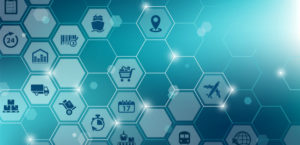Supply chain – The COVID 19 pandemic has undoubtedly had the impact of its effect on the world. health and Economic indicators have been affected and all industries have been completely touched inside a way or some other. One of the industries in which it was clearly noticeable is the farming as well as food business.
In 2019, the Dutch farming as well as food industry contributed 6.4 % to the gross domestic product (CBS, 2020). Based on the FoodService Instituut, the foodservice industry in the Netherlands lost € 7.1 billion inside 2020[1]. The hospitality business lost 41.5 % of its turnover as show by ProcurementNation, while at exactly the same time supermarkets increased their turnover with € 1.8 billion.

Disruptions of the food chain have major effects for the Dutch economy as well as food security as lots of stakeholders are affected. Even though it was apparent to majority of individuals that there was a big effect at the conclusion of this chain (e.g., hoarding around supermarkets, restaurants closing) and also at the start of this chain (e.g., harvested potatoes not finding customers), you will find many actors in the source chain for which the effect is much less clear. It’s therefore important to find out how well the food supply chain as a whole is actually armed to contend with disruptions. Researchers from your Operations Research and Logistics Group at Wageningen Faculty as well as out of Wageningen Economics Research, led by Professor Sander de Leeuw, studied the effects of the COVID 19 pandemic throughout the food supply chain. They based the analysis of theirs on interviews with about thirty Dutch supply chain actors.
Demand within retail up, contained food service down It’s evident and widely known that demand in the foodservice stations went down due to the closure of restaurants, amongst others. In certain instances, sales for suppliers in the food service industry as a result fell to aproximatelly 20 % of the first volume. Being an adverse reaction, demand in the list channels went up and remained within a quality of aproximatelly 10-20 % higher than before the crisis started.
Goods that had to come through abroad had the own problems of theirs. With the change in need from foodservice to retail, the demand for packaging improved considerably, More tin, glass or plastic was required for use in customer packaging. As much more of this packaging material concluded up in consumers’ homes as opposed to in restaurants, the cardboard recycling system got disrupted as well, causing shortages.
The shifts in demand have had a big effect on production activities. In some instances, this even meant a complete stop of production (e.g. inside the duck farming industry, which emerged to a standstill on account of demand fall-out on the foodservice sector). In other instances, a major portion of the personnel contracted corona (e.g. to the meat processing industry), leading to a closure of facilities.
Supply chain – Distribution pursuits were also affected. The beginning of the Corona crisis of China caused the flow of sea canisters to slow down pretty shortly in 2020. This resulted in restricted transport electrical capacity throughout the first weeks of the crisis, and high costs for container transport as a consequence. Truck travel experienced different problems. At first, there were uncertainties on how transport will be handled at borders, which in the end weren’t as strict as feared. What was problematic in instances that are most , however, was the availability of drivers.
The reaction to COVID 19 – supply chain resilience The supply chain resilience analysis held by Prof. de Leeuw and Colleagues, was based on the overview of this core things of supply chain resilience:
To us this framework for the assessment of the interviews, the findings show that few companies were well prepared for the corona crisis and in fact mostly applied responsive methods. The most important source chain lessons were:
Figure 1. 8 best practices for meals supply chain resilience
First, the need to create the supply chain for agility as well as versatility. This seems especially challenging for small companies: building resilience into a supply chain takes attention and time in the business, and smaller organizations often do not have the capacity to accomplish that.
Next, it was discovered that more attention was necessary on spreading threat as well as aiming for risk reduction inside the supply chain. For the future, this means more attention ought to be provided to the manner in which companies rely on specific countries, customers, and suppliers.
Third, attention is required for explicit prioritization and intelligent rationing techniques in cases where demand can’t be met. Explicit prioritization is actually necessary to keep on to satisfy market expectations but additionally to improve market shares in which competitors miss options. This particular task is not new, however, it has additionally been underexposed in this specific crisis and was frequently not a part of preparatory activities.
Fourthly, the corona problems teaches us that the economic result of a crisis in addition depends on the way cooperation in the chain is set up. It’s typically unclear precisely how extra costs (and benefits) are sent out in a chain, in case at all.
Last but not least, relative to other functional departments, the operations and supply chain features are actually in the driving accommodate during a crisis. Product development and marketing and advertising activities have to go hand in deep hand with supply chain activities. Regardless of whether the corona pandemic will structurally replace the traditional considerations between logistics and production on the one hand as well as marketing and advertising on the other, the potential future must tell.
How is the Dutch food supply chain coping throughout the corona crisis?















